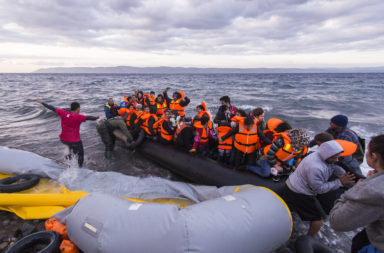By Antonio Armellini in Rome and David Marsh in London
The interweaving, two-sided nature of the debate on a possible British departure from the European Union makes it both fascinating and confusing.
The different aspects contain elements of yin and yang, thesis and antithesis, action and reaction. One moment controversy focuses on the emotive issue of immigration, where the Brexiteers seem to have the stronger hand. A minute later discussions swing back, for connected as well as unconnected reasons, to hard-headed economics, where the ‘stayers’ appear in the ascendancy.
The British show concern about trade and the single market, mortgage rates, the National Health Service and so on.
In the rest of the continent (to which, by the way, the UK belongs) the fear is that ‘Brexit’ could destroy a political construct that has underpinned peace and stability for over 60 years. At the general council of the European Central Bank (linking all 28 EU members) in mid-March, some forecast that a British exit would help bind Europe together, but the overwhelming majority of monetary representatives said it would have a disintegrative effect.
The reality is that the EU, first and foremost, is a political pact. This is the word that ‘dare not speak thy name’ for the Remain campaign, worried that it could bring hordes of angry Brexiteers to the polling booths. It is important to understand what this means.
For centuries European conflicts have provided an opportunity for the British to exercise power and influence, but history has moved on. It’s difficult to believe the era of ‘divide and rule’ can return.
Overarching European stability is paramount, especially in view of new tensions with Russia. This stability can take the form of the fusion of disparate monetary and economic cultures to form a common currency. The euro area is somewhat battered, but still alive. Others, including the British, believe that countries should co-operate without unnecessarily renouncing parts or most of their sovereignty. Both approaches are legitimate and can co-exist independently without unduly impinging on each other.
There can be no single European way forward. The answer is two Europes. One, the ‘Europe of Altiero Spinelli’, is centred on the euro and aims at an ever closer political union. The other (‘the Europe of Margaret Thatcher’) refutes shared sovereignty and is built on trade liberalisation and the single market. Both can exist within a broader EU. One could call it (although the name would probably not catch on) the ‘Europe of Count Coudenhove-Kalergi’, after the founder of pan-Europeanism – defined by democracy, rule of law, market economy and fundamental rights and freedoms. This ‘outer rim’ could gradually encompass countries such as Turkey.
Britain would be the reference point for the new ‘Europe of Margaret Thatcher’. It could exercise considerable influence in shaping its structure and relations with the rest. Were the UK to leave and become another Norway, it would still have to contribute to the EU budget and accept many of its laws and regulations, including free movement of people.
A less balanced, more fragile and more fractured EU would represent a loss of stability, opportunity and wellbeing for all. Perhaps the answer lies in duality, expressed in Goethe’s poem on the leaf of the Ginkgo-biloba tree.
‘Is it but one being single, which as same itself divides? Are there two which choose to mingle, so that each as one now hides? As the answer to such question, I have found a sense that’s true: Is it not my song’s suggestion – That I’m one and also two?’ That should be the watchword for 23 June and beyond.




